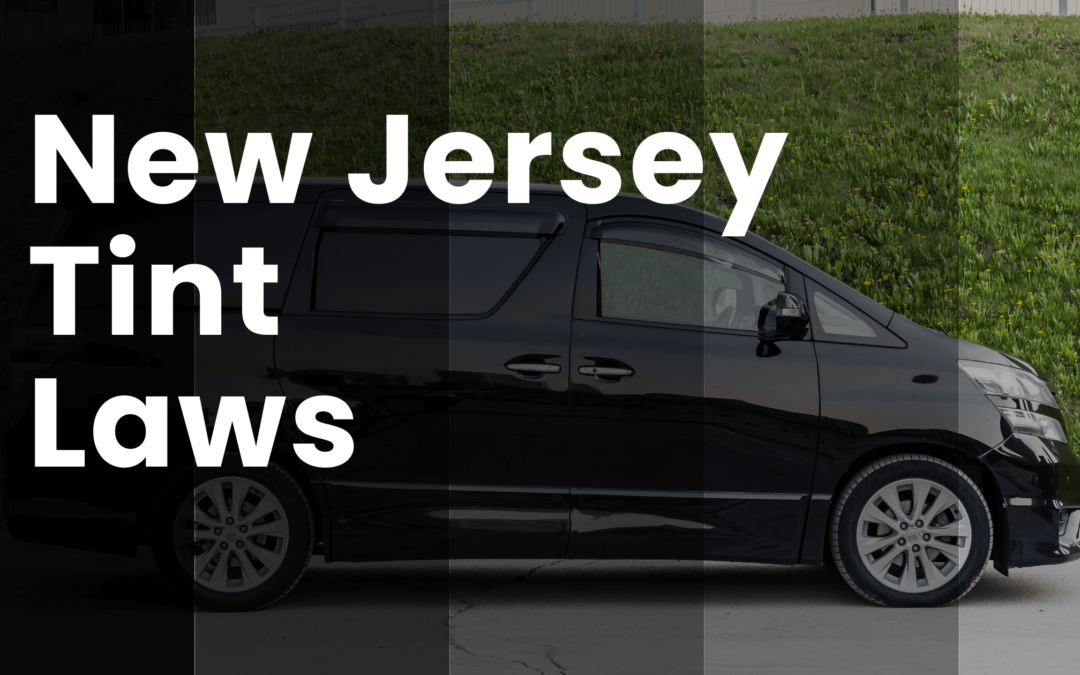New Jersey Tint Laws
New Jersey introduced its car window tinting laws in 2003, and these regulations encompass the acceptable darkness and reflectivity levels for window tints. To assist you in understanding and adhering to these rules, we’ve provided a comprehensive guide.
Disclaimer
While I have a background in commercial law and strive to provide accurate and informative content, it’s important to note that I am not a legal expert. The information presented in this blog is based on my interpretation of the subject matter, and laws can vary by location and change over time. It is strongly recommended that readers verify all sources of information and consult with legal professionals or relevant authorities before making any decisions related to tint laws.
Understanding the Terminology Regarding Tint Laws
The most important part of the legislation is understanding what VLT is and how law enforcement services check or test the percentage.
What is VLT
VLT, or Visible Light Transmission, is a measure of the amount of visible light that can pass through a window tint or film. It is commonly used to determine the darkness or opacity of window tints, and it’s an important factor in window tinting laws and regulations.
VLT is typically expressed as a percentage. For example, a window tint with a VLT of 20% allows only 20% of visible light to pass through, making it relatively dark and less transparent. Conversely, a window tint with a VLT of 70% allows 70% of visible light to pass through and is much lighter and more transparent.
How do Law Enforcement services test the VLT percentage?
Window tinting laws vary by jurisdiction, and they often specify the maximum allowable VLT for different types of windows on a vehicle, such as the front windshield, front side windows, rear side windows, and rear window. These laws are designed to ensure that drivers have adequate visibility and that law enforcement can see into vehicles for safety and identification purposes. The manner that they go about testing the VLT is by using a VLT gauge/meter.
Here is a YouTube Short from @TrafficServices and @TorontoPolice showcasing the device and how it works. Even though it is in Canada, it still is helpful to understand how the tint darkness is measured.
Window Tint Darkness in New Jersey:
In New Jersey, the allowable percentage of visible light through car windows is referred to as Visible Light Transmission (VLT). The rules for VLT vary depending on the type of vehicle, whether it’s a sedan, SUV, or van.
New Jersey Tint Laws For Sedans:
- Windshield: No tint is permitted on the windshield.
- Front Side windows: The law prohibits any tint on these windows.
- Back Side windows: Tint darkness may vary.
- Rear Window: Similar to back side windows, you have flexibility in choosing tint darkness.
Tint Law For both SUVs and Vans in New Jersey:
- Windshield: No tint is allowed on the windshield.
- Front Side windows: The front side windows should remain completely untinted.
- Back Side windows: You can apply any level of tint darkness.
- Rear Window: The rear window allows for any tint darkness.
| Type of Window | Sedans | SUVs/Vans |
|---|---|---|
| Windshield | No tint allowed | No tint allowed |
| Front Side Windows | No tint allowed | No tint allowed |
| Back Side Windows | Tint darkness may vary | Any level of tint darkness allowed |
| Rear Window | Similar to back side windows | Any tint darkness allowed |
Window Tint Reflection in New Jersey:
Window tints can reflect incoming light, reducing glare and heat. New Jersey’s window tint laws specify allowable window reflection for tinted windows:
Reflectivity Tint Laws For both sedans and SUVs/Vans:
- Front Side windows: These windows must not exhibit a mirrored or metallic appearance.
- Back Side windows: Similar to front side windows, rear window tints should not have a mirrored or metallic appearance.
Additional New Jersey Window Tint Rules and Regulations:
New Jersey’s window tinting laws encompass several important additional regulations:
Side Mirrors
If you tint the back window, dual side mirrors are mandatory.
Restricted Colors
New Jersey does not explicitly prohibit any tint colors.
Certificates
Film manufacturers are not required to certify the film they sell within the state.
Stickers
The law does not mandate stickers to identify legal tinting.
Medical Exceptions
New Jersey allows medical exemptions for special tints. For precise details regarding these exemptions, it is advisable to consult New Jersey law.
Regulations for Out-of-State Drivers
The same regulations apply to out-of-state drivers as those for drivers living in the State.
If you are from States such as New York, Pennsylvania, Maryland, and Delaware you are expected to abide by these laws and regulations.
Penalties
The consequences for non-compliance can be severe, with a maximum fine of $1,000 for the first offense and $5,000 for subsequent offenses, as per NJ Statutes 39:3-75.3.
It’s important to recognize that interpretations of New Jersey’s tinting laws may vary depending on your county or place of residence. To ensure strict compliance, we strongly recommend verifying this information with your local DMV or law enforcement authorities.
Our data on window tint laws in New Jersey was last updated in 2023, and we remain committed to offering the most accurate and current information available. If you encounter any inaccuracies or outdated information, please don’t hesitate to contact us. Your trust in our resources is of utmost importance, and we are dedicated to providing the most reliable information.

